Feast Your Eyes on the Luxurious Beauty of Aesthetic Movement Design
The Aesthetic Movement was one of the most important social movements of the late 19th century. In Brooklyn, we see its influences everywhere — both on the exteriors and interiors of our period homes and buildings.

Dante Gabriel Rossetti at 16 Cheyne Walk by Henry Treffry Dunn. Painting via Wikipedia
The Aesthetic Movement was one of the most important social movements of the late 19th century, yet most people are not aware of it at all. As far as our Brooklyn neighborhoods are concerned, we see the movement’s influences everywhere, both on the exteriors and interiors of our period homes and buildings.
The Aesthetic Movement, as discussed today, is mostly seen as a decorative or artistic phase of the Victorian era. But it was much more than that. Like many of the social and artistic trends of the time, the movement started in England, and ran roughly from 1870 to 1900.
If the Aesthetic Movement had a theme, it would have to be art for art’s sake. The writers, poets and cultural leaders of the time asserted that one should live surrounded by beauty — in beautiful rooms filled with beautiful things. This was the time when decorative arts rose to symbolize the height of our striving society, and they have remained there ever since.
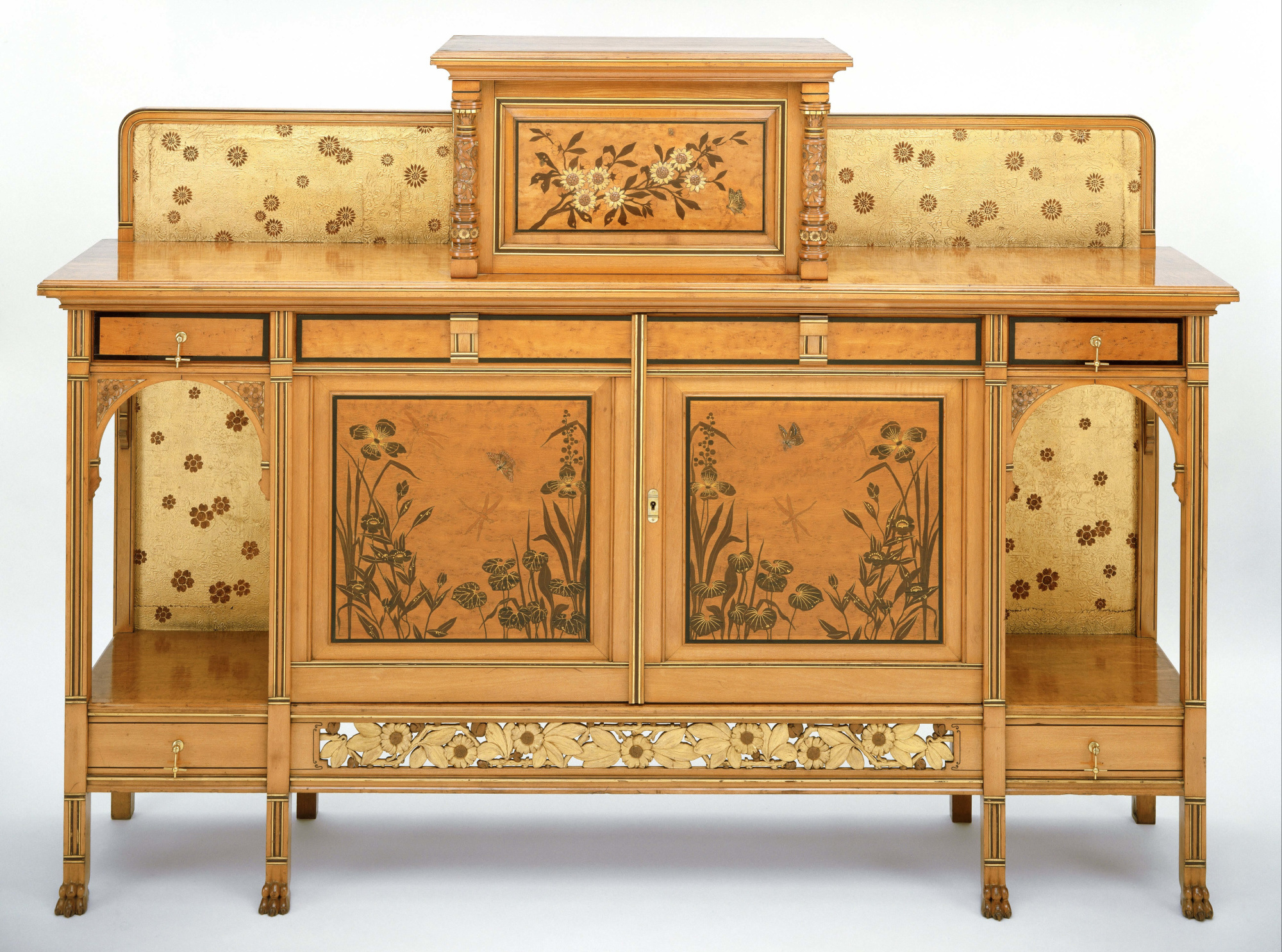
The Aesthetic Movement was inspired by Japanese art and design.
The greatest influence of the movement occurred when Japan opened up to Western trade in the mid 1800s, fueling a mania in both England and the U.S. for Japanese design, art and goods.
The delicate and asymmetrical art of Japan was a revelation to Western audiences hungry for something different, and the designers of the Aesthetic Movement quickly became fascinated with these new shapes and motifs.
Leaves and flowers, butterflies, birds and other natural themes joined with the rectilinear shapes of Japanese furniture and architecture. Designer Charles Eastlake was heavily influenced by Japanese culture and design — reinterpreting them in his American Eastlake furniture and interior woodwork.
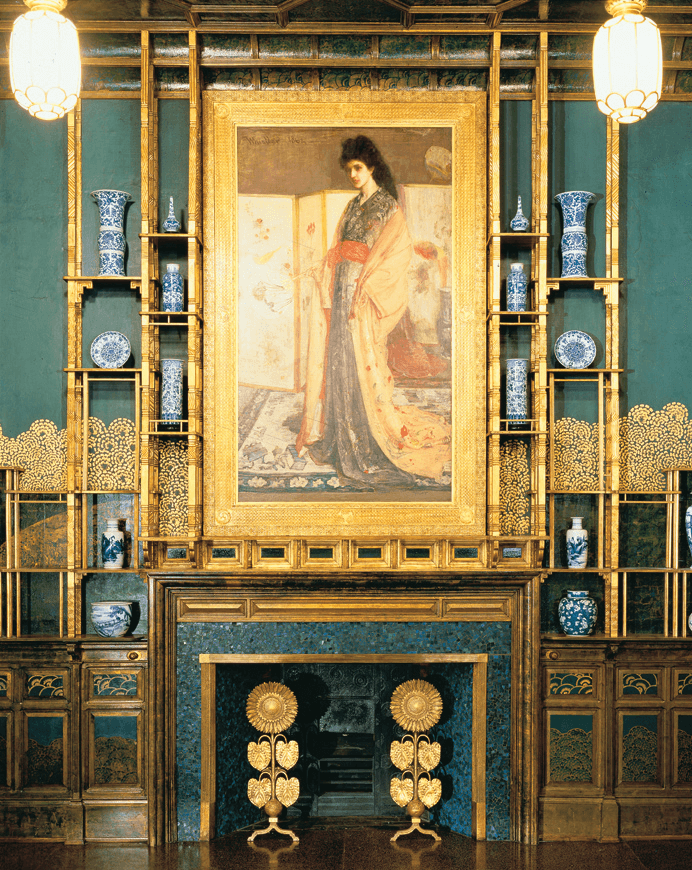
Wallpaper in Japanese patterns was also in vogue, bringing colors and designs not seen before into the home. In furniture, Japanese-style ebonized and lacquered pieces — sometimes gilded — were popular, as were marquetry and painted surfaces. It was an age of amazing, elaborate surfaces.
The Aesthetic Movement was the precursor of the Arts and Crafts Movement, which, in America, was highly influenced by Japan, especially on the West Coast. But where Arts and Crafts valued simple beauty, the late Aesthetic Movement did not — it soon ushered in a robber-baron style of luxurious excess.
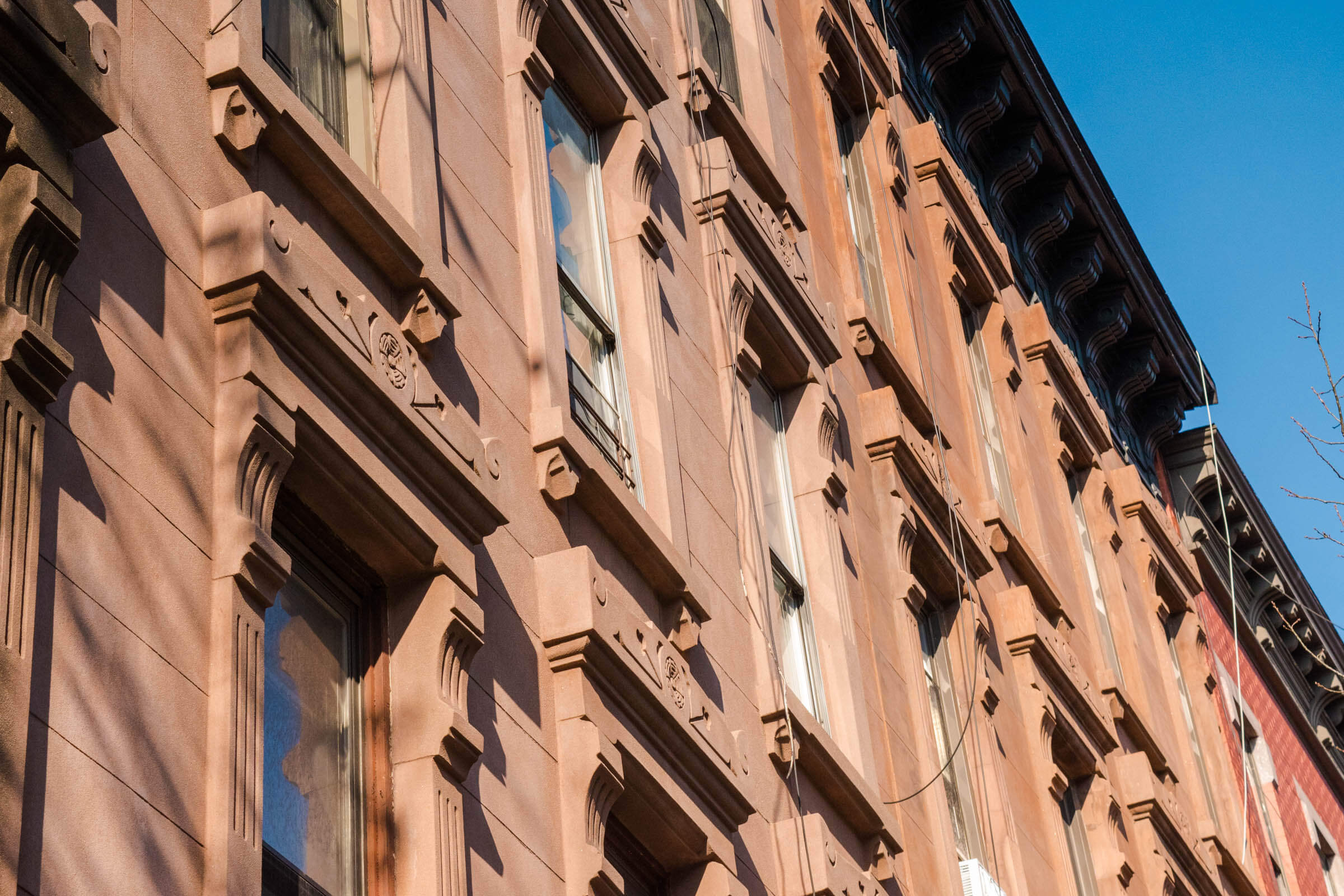
The Aesthetic Movement in Brooklyn
At the time, many Brooklynites had more money to spend on the fashions of the day. No well-to-do Brooklynite could escape the Aesthetic Movement’s pervasive influence, and they built and decorated accordingly. The impact of the style’s natural motifs can still be seen in the exterior incised stonework of Neo-Grec Brooklyn brownstones.
Inside Brooklyn homes, the Movement inspired iridescent jewel tones, warm woods, patterned parquet floors, marquetry furniture, Japanese-style patterns on walls and dishes, butterflies, peacocks and ginkgo leaves on many surfaces, and yards of velvet and other rich fabrics.
Inside what looked like relatively conservative row houses was a cacophony of color, texture, materials and merchandise galore. The end of the 19th century — the Gilded Age — was a time of great excess, much of it expressed in the homes of Brooklyn.
Read more about how the Aesthetic Movement shaped Brooklyn’s interiors.

This story has been edited and updated since its initial publication.
Related Stories
Walkabout: Aesthetically Speaking, Part II
The Luxurious Wedding and Remarkable Home of Great Brooklyn Architect Montrose Morris
Queen Anne Style: America’s Flamboyant and Fantastic Architectural Melting Pot
Email tips@brownstoner.com with further comments, questions or tips. Follow Brownstoner on Twitter and Instagram, and like us on Facebook.
[sc:daily-email-signup ]


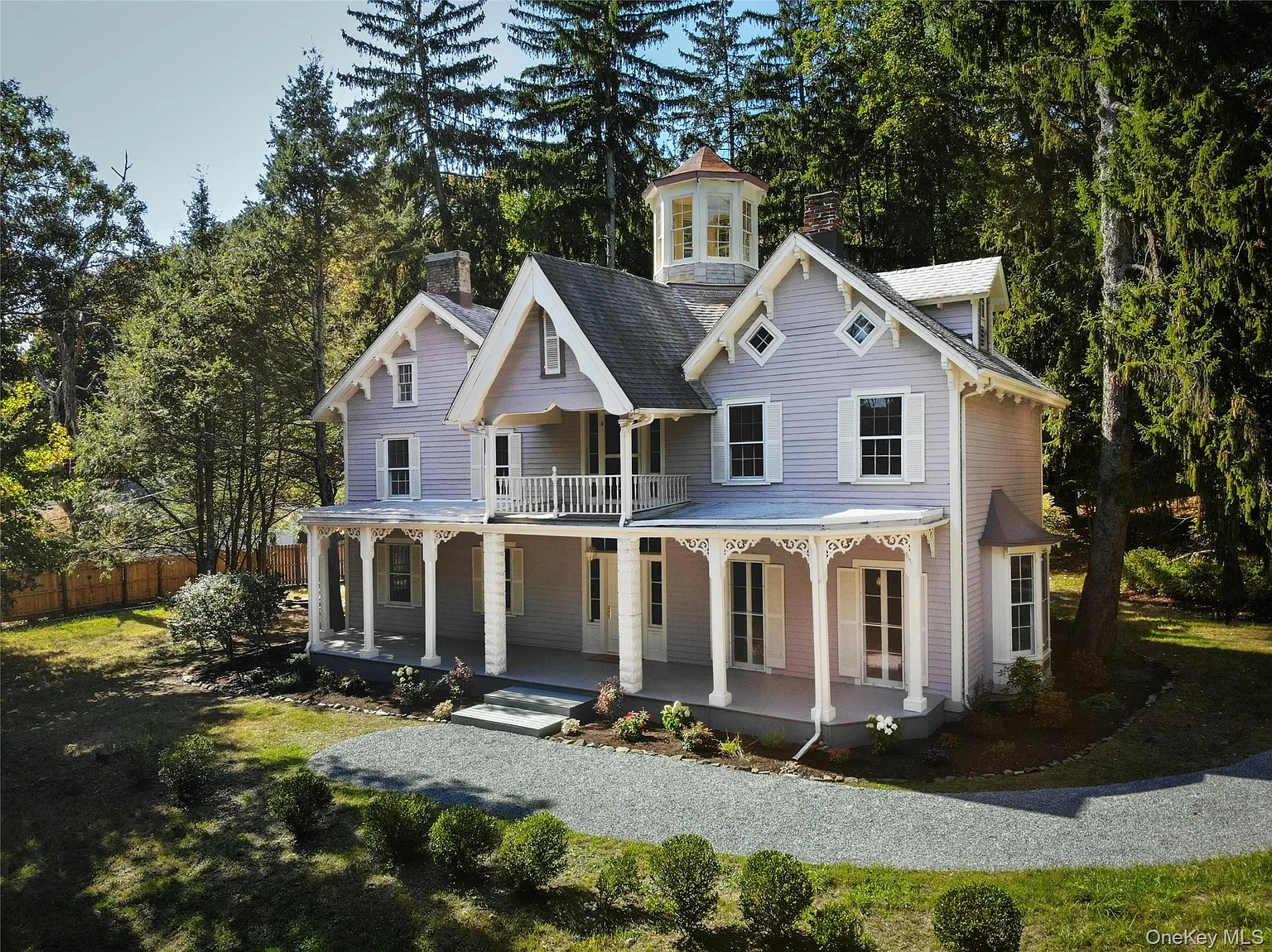
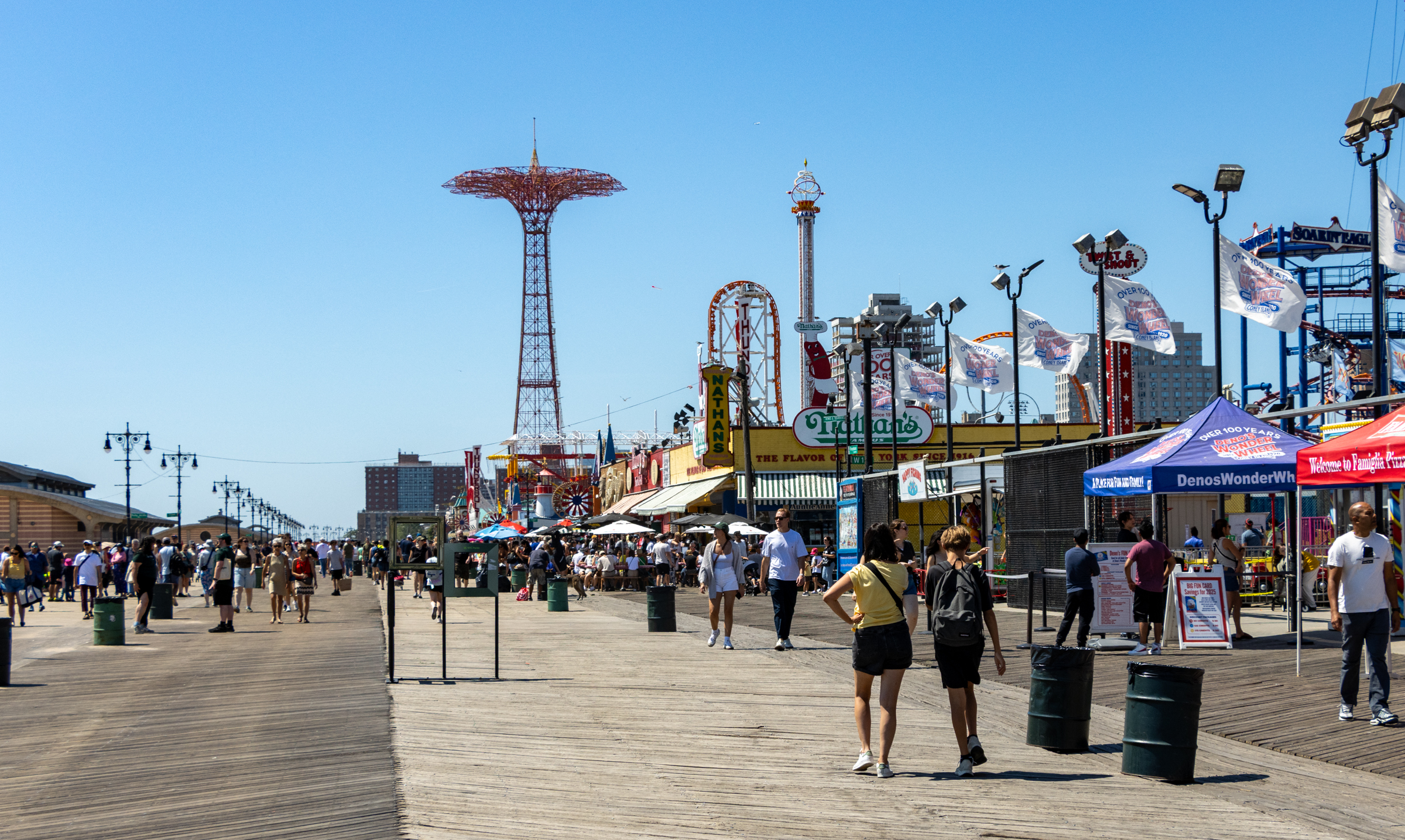
Speaking of the reach of the style, my great grandmother was an elementary school teacher and farmer’s daughter in a small Midwestern town and in addition to those cheaply produced but charming Aesthetic Movement plates from France, she also passed down a Japonaise lacquer jewelry box (from Japan) and two matching oil lamps with a mixed brass and nickel Celtic style design. These were also pretty typical of the new style.
Thanks MM,
your description brings to mind the work of Gustav Klimt in Vienna and Arts Nouveau around the turn of the last century.
Minard, the Aesthetic Movement was absolutely everywhere — though its original proponents might complain it had been watered down or, as we would say today, “co-opted.”
Eastlake’s book on decorating was a mass best seller, cheap mass-produced transferware plates were everywhere, the doilies and wallpapers and tripartate wall treatments and colors reached every nook and cranny, medallions and incised lines decorated many a house and ironwork, and even my humble two-family Brooklyn house was built in the by-then-obsolete Aesthetic Movement/Eastlake style in the late 1890s.
“Ooo! Williamsburg!!”
Totally. It’s happening all over again (see restaurants-as-gentrifiers post yesterday) today with the homemade, artisinal, unique, creative, “authentic,” old houses, vintage clothes, antiques, etc., owls and deers and bird themes, Grow House Grow and Timorous Beasties wallpapers, crowd-sourced “subversive” printed toiles, salvage, goth, Etsy, do-it-yourself music and art, poetry slams, house decorating blogs, guerrilla knitting, Craftzine, you name it.
I love the stylized geometric florals of the Aesthetic Movement. I have some Aesthetic Movement plates that belonged to my great grandmother with butterflies and insects on them.
Great job MM I really loved this peace..
MM, I sent your piece to my friend who is an art historian and wrote a book on Japanese influence on American Decorative Arts and Design. Here book is entitled The Influence Of Japanese Art On Design by Hannah Sigur.
She loved your piece and said you might like to read her book.
She said this…..
“I had noticed the numerous Aesthetic aspects of Brooklyn–they are all over Park Slope, which is contemporary with a lot of San Francisco and looks like brick versions of the SF Painted Ladies–but not much in the Heights (at least so far as I can tell). Interestingly, that bedroom alcove is identical in taste to one I used to visit in SF–the former home of my old friend who now lives in India. She was very friendly with the Bradbury/Bradbury wallpaper owners, who did her walls and used the room for their catalog photography…..
She goes on to say another friend in Brooklyn Heights had the same stuff and then suggests….
“MM might read my book — Japonisme not quite as lite a movement as she portrays. She also implies a direct evolution into Arts & Crafts from Aesthetic, but they are different branches of related ideas, even though one appeared earlier than the other.”
Thanks again for the great article.
Minard–I don’t think what MM wrote is guesswork. What other reason would you posit for the design elements she highlights in her post? This Brooklyn V Manhattan stuff that we debate these days was not so relevant back then as Brooklyn was an independent city. The decorative elements on Brownstones of the period are equally impressive in Brooklyn as in Manhattan.
Great piece, MM. Thank you.
Aeshetic Movement in Brooklyn NY, uhmm, let me think about that. Brooklyn prior to say WWI was a very conservative, Bourgeoise place. Stolid and churchgoing. I think most of that arty stuff happened in the city across the river where designers like Tiffany and Saint Gaudens reveled in over-the-top (to Brooklyn eyes decadent) displays of artsy design.